
Health Barometer – Monitoring & Population focus
Southeast Europe’s Health Landscape
The Health Barometer provides an in-depth analysis of key health indicators across six Southeast European countries: Albania, Serbia, Montenegro, Bulgaria, North Macedonia, and Romania. By examining 18 vital health parameters from 2018 to 2022/2023, this section offers a comprehensive comparison of health trends over time and highlights regional disparities. Additionally, data from these countries is juxtaposed with the European Union (EU) averages, facilitating a broader understanding of how the region’s health metrics align with European standards.
Key indicators include life expectancy, mortality rates, disease burden, healthcare expenditures, and immunization rates. Through this comparison, the Health Barometer aims to provide insights into the progress and challenges facing the health systems in Southeast Europe, offering valuable context for policymakers, healthcare professionals, and the public.
Explore the following sections for detailed visual data and comparative analysis that reveal both the successes and areas for improvement in the health sectors of these nations.
Life expectancy at birth
Summary of Life Expectancy Trends (2018-2023):
From 2018 to 2023, the life expectancy trends in Albania, Montenegro, Serbia, Romania, Bulgaria, and North Macedonia show a general pattern affected by the COVID-19 pandemic. Across all countries, 2020 and 2021 were marked by noticeable drops in life expectancy, reflecting the pandemic’s impact on public health systems and mortality rates.
By 2022 and 2023, there was a recovery across the region, with most countries showing a rebound in life expectancy. However, the extent of recovery varied: Albania experienced smaller fluctuations and maintained relatively high stability, with only a slight drop during the pandemic and a return to 77 years by 2023. Montenegro, Romania, and Serbia exhibited more pronounced dips during 2020 and 2021 but also showed substantial recovery by 2023. Bulgaria and North Macedonia had some of the steepest declines in 2021, reflecting a sharper impact of the pandemic, especially in Bulgaria, which dropped to 71.4 years. However, they both improved by 2023, though Bulgaria remained the lowest among the countries analyzed. A commonality among all countries was the dip in 2020 and 2021, likely due to the pandemic, followed by a recovery in subsequent years. Despite this shared trend, differences in healthcare systems and social factors contributed to the varying pace of recovery and the overall life expectancy levels by 2023. Albania consistently performed better than its neighbors, while Bulgaria lagged behind, showing a slower recovery. In conclusion, while the pandemic caused a universal decline in life expectancy, the rate of recovery varied, with Albania and Montenegro showing the strongest rebounds and Bulgaria facing the longest-lasting impact.
In comparison the European Union (EU) maintained higher life expectancy throughout the period, with only a slight drop during the pandemic. In 2022, the EU had an average life expectancy of 80.6 years, significantly higher than the other countries in the region. By 2023, the EU life expectancy reached 81.5 years, highlighting the gap in health outcomes compared to the countries of Southeast Europe.
Situation in 2022
Albania (76.83 years) had a better life expectancy than most of its neighbors. Montenegro (76.19 years) and Romania (75.3 years) were close but still lagged behind. Serbia (75.48 years) was in a similar range, though slightly better than Romania and Bulgaria. Bulgaria (73.5 years) had the lowest life expectancy in 2022, showing the greatest need for improvement. North Macedonia (74.42 years) was also lower than most but better than Bulgaria.
In 2022, the EU average of 80.6 years was notably higher than any of the Southeast European countries, with the gap ranging from 3.8 years (Albania) to 7.1 years (Bulgaria), highlighting disparities in healthcare, lifestyle, and economic conditions across the region.
Life expectancy at birth - Men
Situation in 2022 – Life Expectancy at birth for Men
In 2022, Albania (74.5 years) had the highest life expectancy for men among the non-EU countries analyzed, Montenegro (74.3 years) was close behind Albania and followed by North Macedonia (74.1 years). Serbia (73.0 years) and Romania (71.5 years) were slightly lower in Life expectancy for men. Bulgaria (69.9 years) had the lowest life expectancy for men, showing the slowest post-pandemic recovery. The European Union (77.5 years) maintained a substantial lead over all the Southeast European countries.
Overall, while the life expectancy for men in the countries from Southeast Europe showed signs of recovery by 2023, a significant gap remained compared to the European Union, underscoring ongoing health disparities.
Summary of Life Expectancy at birth for Men Trends (2018-2023):
From 2018 to 2023, all countries—Albania, Montenegro, Serbia, Romania, Bulgaria, and North Macedonia—showed a similar pattern of declining life expectancy for men during the pandemic years (2020 and 2021), followed by a recovery starting in 2022. The steepest declines occurred in 2021, likely due to the impact of COVID-19. By 2023, life expectancy began to improve, but the degree of recovery varied: Albania and North Macedonia both showed relatively stronger resilience, with life expectancy returning close to pre-pandemic levels (74.7 years for Albania and 74.1 years for North Macedonia). Montenegro, Serbia, and Romania also recovered but to a lesser extent. Bulgaria showed the slowest recovery, reflecting the most prolonged impact.
Throughout the period, the European Union maintained a much higher life expectancy for men compared to the Southeast European countries. In 2022, the EU average was 77.5 years, significantly higher than any of the nations from Southeast European nations. Even with slight declines in 2020 and 2021 due to the pandemic, the EU life expectancy remained resilient, highlighting a more robust healthcare system and healthier living conditions across the union.
Life expectancy at birth – Women
Situation in 2022
Women in Southeast Europe, while showing signs of recovery post-pandemic, continue to live notably shorter lives compared to those in the European Union. Despite Albania and Montenegro performing better than their peers, the gap between Southeast Europe and the EU persists, reflecting ongoing socioeconomic and healthcare disparities. In 2022, the life expectancy for women across Southeast European countries (Albania, Montenegro, Serbia, Bulgaria, and North Macedonia) presented both shared trends and clear disparities when compared among themselves and with the European Union. Albania had the highest life expectancy among the Southeast European countries at 79.0 years. Montenegro followed closely behind with 78.7 years. Serbia and Bulgaria were similar, with life expectancy standing at 78.2 years for Serbia and slightly lower at 77.3 years for Bulgaria. North Macedonia had the lowest life expectancy in 2022, with women living on average 76.9 years. This highlights how Southeast European countries followed a similar overall trend but differed in their resilience and pace of recovery. Most Southeast European countries hovered around the mid-to-high 70s, with none surpassing the 80-year mark. Albania and Montenegro demonstrated stronger resilience in 2022 compared to their neighbors, narrowing the gap with EU life expectancy slightly. Bulgaria and North Macedonia remained the most affected, showing the largest differences compared to the EU average, with women living significantly fewer years than their counterparts in Western Europe.
The European Union significantly outperformed all Southeast European countries with a life expectancy of 83.3 years in 2022. This represents a gap of about 4 to 6 years between the EU and Southeast Europe, with Albania being the closest to EU levels, but still 4.3 years behind. Bulgaria and North Macedonia had the largest gaps, trailing the EU by 6 years or more.
Summary of Life Expectancy Trends for Women (2018-2023)
From 2018 to 2023, the life expectancy for women across Albania, Montenegro, Serbia, Bulgaria, and North Macedonia displayed several common trends: General Decline during the Pandemic: All countries experienced a decline in life expectancy around 2020 and 2021, likely due to the impact of the COVID-19 pandemic. This pattern mirrors the trend seen in the European Union, although the EU’s decline was less pronounced. Recovery in 2022-2023: By 2022 and 2023, most countries began showing signs of recovery in life expectancy. The extent of this recovery varied, with some countries rebounding more than others, but none returned fully to pre-pandemic levels, with Albania and Montenegro showing stronger recoveries by 2023, while Bulgaria and Serbia were slower to regain pre-pandemic levels. However, there were also key differences in the trends: Albania had the highest life expectancy throughout the period, although it experienced a noticeable decline from 81.9 years in 2019 to 79.0 years in 2022, before slightly recovering to 79.3 years in 2023. Montenegro and Serbia saw sharper declines around the 2020-2021 period, with Montenegro dropping to 77.1 years and Serbia hitting a low of 75.9 years in 2021. Both countries experienced some recovery, with Montenegro reaching 80.4 years and Serbia 78.3 years by 2023. Bulgaria consistently had the lowest life expectancy, falling to 75.2 years in 2021, and although it recovered slightly, it remained one of the lowest, at 78.0 years in 2023. North Macedonia had a similar pattern to Bulgaria, dropping to 76.0 years in 2021, with a gradual rise to 78.5 years in 2023, the same as it started in 2018.
European Union consistently outperformed Southeast European countries, with the life expectancy for women being between 83.2 and 83.9 years over the period, compared to lower averages in Southeast Europe. The EU maintained a generally higher life expectancy, ranging from 83.7 years in 2018 to 83.9 years in 2023, with a small dip during the pandemic period (2020-2021), while countries in Southeast Europe had more severe decline in the pandemic period.
Overall Mortality rate per 1.000 people
Situation in 2022 – Mortality Rate
The 2022 mortality data highlights ongoing disparities among Southeast European countries and the European Union. Southeast Europe: In 2022, mortality rates remained elevated across Southeast Europe, though they began to decrease slightly from their 2021 peaks. Serbia (14.8 per 1,000), Romania (14.2 per 1,000), and Bulgaria (15.4 per 1,000) had the highest mortality rates in the region, reflecting persistent healthcare challenges. Montenegro also had a relatively high mortality rate of 12.1 per 1,000, similar to North Macedonia (12.3 per 1,000). Albania remained the best performer in Southeast Europe, with a mortality rate of 8.3 per 1,000, closely trailing the EU.
In comparison, the European Union had a mortality rate of 11.3 per 1,000 in 2022, lower than all Southeast European countries except for Albania. This reflects the persistent gap in mortality rates between Southeast Europe and the EU. Serbia, Romania, and Bulgaria had mortality rates well above the EU average, with Bulgaria recording the highest mortality rate of all countries at 15.4 per 1,000. North Macedonia and Montenegro also saw elevated mortality rates but were below the levels seen in Romania and Serbia. Albania had the lowest mortality rate in Southeast Europe, reflecting comparatively better health outcomes, though still slightly above the EU average.
Summary of Mortality Rate Trends (2018-2023)
Across the period from 2018 to 2023, the mortality rates for Albania, Romania, Serbia, Montenegro, Bulgaria, North Macedonia, and the European Union showed several commonalities and differences. Commonalities in Trends: Pandemic Impact (2020-2021): All countries saw a notable increase in mortality rates during the pandemic years, particularly in 2020 and 2021. The pandemic placed significant strain on healthcare systems, especially in Southeast Europe, causing a substantial rise in death rates. Recovery Post-2021: After reaching their peaks in 2021, mortality rates started to decline in 2022 and 2023. However, none of the countries fully returned to pre-pandemic levels by 2023, suggesting that the effects of the pandemic were still lingering. Differences in Trends: Severity of Mortality Increase: Southeast European countries, including Serbia, Romania, Montenegro, Bulgaria, and North Macedonia, experienced a more pronounced increase in mortality rates compared to Albania and the European Union. In 2021, Serbia peaked at 15.5 deaths per 1,000 people, while Romania and Bulgaria also saw mortality rates jump to 15.0 and 15.4 respectively. North Macedonia recorded a significant increase to 12.5 in the same period. Albania remained the least affected, with mortality rates peaking at 8.8 per 1,000 in 2021, which was still relatively lower than other Southeast European countries. Different Rates of Recovery: By 2023, countries like Albania and North Macedonia saw quicker recovery in their mortality rates, while Serbia, Bulgaria, and Romania still reported significantly higher mortality than their pre-pandemic levels.
The European Union, with its stronger healthcare systems, experienced a more moderate rise in mortality during the pandemic and began recovering faster, with the mortality rate dropping to 10.9 per 1,000 people in 2023.
Baseline Differences are: Albania consistently had the lowest mortality rate throughout the period, while Serbia, Romania, and Bulgaria had the highest baseline rates, showing a significant gap in healthcare and living conditions between Southeast Europe and the EU.
Male Mortality rate per 1.000 people
Situation in 2022 – Male Mortality Rate
In 2022, male mortality rates across Southeast Europe remained elevated, though most countries showed signs of recovery from the pandemic-driven spikes of 2020 and 2021. Bulgaria continued to have the highest male mortality rate in the region, with 18.0 deaths per 1,000 people in 2022. This represents a small decline from the pandemic peak but remains much higher than other countries. Serbia (16.2 per 1,000) and Romania (15.6 per 1,000) followed with elevated mortality rates, reflecting the lasting healthcare challenges in these nations. Montenegro and North Macedonia showed relatively lower rates compared to Bulgaria and Serbia, but still, mortality rates were high at 12.3 and 11.4 deaths per 1,000 respectively. Albania had the lowest male mortality rate in the region at 7.8 deaths per 1,000, showing its ability to keep mortality closer to pre-pandemic levels, despite the challenges posed by the pandemic.
The European Union had a male mortality rate of 11.6 deaths per 1,000 in 2022, which was significantly lower than all Southeast European countries except for Albania. This highlights the persistent gap between the EU and Southeast Europe in terms of healthcare outcomes.
Summary of Male Mortality Rate Trends (2018-2023)
Commonalities in Trends:
From 2018 to 2023, the male mortality rates for Southeast European countries (Albania, Romania, Serbia, Montenegro, Bulgaria, North Macedonia) and the European Union showed several common patterns: Pandemic-Driven Increase: All countries saw a noticeable rise in male mortality rates during the 2020-2021 period, driven by the COVID-19 pandemic. The increase in mortality was evident in every country, as male populations were particularly affected during the height of the pandemic. Post-Pandemic Decline: By 2022, all countries began to see a gradual decline in mortality rates from their pandemic peaks. However, these rates remained higher than pre-pandemic levels, suggesting the lasting effects of the pandemic and underlying healthcare issues. Differences in Trends: Bulgaria had the highest mortality rates throughout the period, with the rate peaking at 18.8 deaths per 1,000 people in 2020 and slightly reducing to 18.0 in 2022. Serbia and Romania followed similar trends, with male mortality rates rising significantly during the pandemic and slightly declining by 2022. In Serbia, mortality rose to 17.0 in 2020, while Romania peaked at 16.2 in 2020. Albania had consistently the lowest mortality rate in the region, with a rise from 7.2 in 2018 to 8.6 in 2020, before declining to 7.8 in 2022. North Macedonia and Montenegro also saw elevated mortality rates, peaking in 2020 or 2021, with Montenegro reaching 12.8 and North Macedonia 12.1.+
Albania consistently had the lowest male mortality rates over the period, while countries like Bulgaria and Serbia experienced much higher mortality rates, even before the pandemic. This reflects pre-existing health disparities between these countries.
The rise in male mortality rates during the pandemic was more pronounced in Southeast European countries compared to the European Union. Countries like Bulgaria, Serbia, and Romania saw larger increases in mortality rates during the pandemic, with rates rising by 2-3 deaths per 1,000 between 2019 and 2020. Regarding the Recovery Pace: The European Union saw a smaller increase and a quicker recovery, with mortality rates stabilizing at 11.6 deaths per 1,000 by 2022. Southeast European countries, particularly Bulgaria and Serbia, saw slower recoveries, and their mortality rates remained significantly elevated in 2022 compared to 2018 levels.
Female Mortality rate per 1.000 people
Situation in 2022 – Female mortality rates
In 2022, female mortality rates across Southeast Europe showed improvement from the pandemic peak, but notable disparities remained among the countries from the region, as well as between Southeast Europe and the European Union.
Bulgaria had the highest female mortality rate in the region in 2022, with 14.2 deaths per 1,000 people, followed closely by Serbia (13.3 deaths) and Romania (13.1 deaths). Montenegro and North Macedonia had intermediate rates, with 9.8 and 9.3 deaths per 1,000 respectively.
The European Union had a female mortality rate of 10.2 per 1,000 people in 2022, outperforming most Southeast European countries except for Albania and North Macedonia. This reflects a significant gap in healthcare outcomes between the EU and countries like Bulgaria, Serbia, and Romania.
Summary of Female Mortality Rate Trends
Across Southeast European countries (Albania, Romania, Serbia, Montenegro, Bulgaria, and North Macedonia) and the European Union, several common trends emerged between 2018 and 2023: Pandemic Spike (2020-2021): All countries experienced a noticeable increase in mortality rates during the COVID-19 pandemic in 2020 and 2021. The pandemic heavily affected female mortality rates across the region, with a peak occurring in 2020 for most countries. Gradual Decline Post-Pandemic: By 2022, all countries showed a slight recovery from the pandemic peak, with mortality rates starting to decrease, although they remained higher than pre-pandemic levels in most cases.
Yet there are notable differences in Trends: Severity of Mortality Increase – Southeast European countries generally experienced a more significant rise in mortality rates during the pandemic compared to the European Union. Bulgaria and Serbia had the highest mortality rates in the region, with Bulgaria peaking at 15.2 deaths per 1,000 people in 2020 and Serbia at 14.0. This reflects pre-existing health challenges that were exacerbated by the pandemic. Albania consistently had the lowest female mortality rates, peaking at 7.6 deaths per 1,000 people in 2020 and showing faster recovery to 7.2 in 2022.
Recovery Pace: The European Union saw a smaller increase in mortality rates compared to Southeast Europe and began recovering quicker, with female mortality rates dropping from 10.8 in 2020 to 10.2 in 2022. Southeast European countries like Serbia, Bulgaria, and Romania were slower to recover from the pandemic’s impact. Thus Albania continues to show resilience, maintaining the closest mortality rates to the EU, while Bulgaria remains the furthest behind with the highest mortality rate in Southeast Europe.
Comparison of Male and Female mortality rates
Comparison Between the European Union and Southeast Europe
Similarities: Pandemic Impact: The pandemic caused a spike in mortality rates in both the European Union and Southeast Europe. However, the magnitude of this impact varied, as did the recovery. Gender Disparity: In both the EU and Southeast Europe, male mortality rates were higher than female mortality rates across all years (2018-2023). This reflects a global pattern where men generally have higher mortality rates than women.
Differences: Higher Mortality in Southeast Europe: Mortality rates for both men and women were consistently higher in Southeast Europe compared to the European Union. For example, in 2022: EU male mortality was 11.6 per 1,000, while it was 16.2 in Serbia and 18.0 in Bulgaria. EU female mortality was 10.2 per 1,000, compared to 13.3 in Serbia and 14.2 in Bulgaria. Faster Recovery in the EU: The European Union saw a quicker decline in both male and female mortality rates post-pandemic, with rates beginning to stabilize by 2022. In contrast, Southeast European countries, especially Bulgaria and Serbia, continued to struggle with elevated mortality rates, particularly among men.
Men in Southeast Europe faced higher mortality rates and slower recovery than women, both before and after the pandemic.
Southeast Europe as a whole had consistently higher mortality rates than the European Union for both genders, highlighting disparities in healthcare and living conditions between the regions.
Comparison of Male and Female Mortality Rates (2018-2023) in Southeast Europe
Similarities: Pandemic Spike (2020-2021): Both male and female mortality rates experienced a sharp increase across all Southeast European countries during the COVID-19 pandemic in 2020 and 2021. This spike was visible across the board, highlighting the pandemic’s widespread impact on mortality, regardless of gender. Post-Pandemic Decline (2022-2023): For both genders, mortality rates began to decline slightly by 2022, although they remained above pre-pandemic levels across all countries. This suggests that while recovery is underway, the lasting effects of the pandemic are still being felt.
Differences: Male Mortality Rates Generally Higher: Across all countries, male mortality rates were consistently higher than female mortality rates. For example, in 2020, Serbia’s male mortality rate peaked at 17.0 deaths per 1,000 while the female rate peaked at 14.0 per 1,000. This trend is consistent in each country, with men experiencing higher death rates. Magnitude of Increase: The increase in male mortality during the pandemic was more pronounced than the increase in female mortality. For instance, in Bulgaria, male mortality rose from 17.1 in 2018 to 18.8 in 2020, while female mortality rose from 14.0 to 15.2 over the same period.
Recovery Pace: Men in Southeast Europe generally showed a slower recovery post-pandemic. For example, by 2022, male mortality rates in Montenegro and Serbia remained significantly elevated, whereas female mortality rates saw a quicker decline, though still higher than pre-pandemic levels.
Infant mortality rate per 1.000 live births
Situation in 2023 – Infant mortality rate
In 2023, the infant mortality rates for the Southeast European countries and the European Union are as follows: Albania: 7.2, Romania: 5.3, Serbia: 4.2, Montenegro: 2.3, Bulgaria: 5.0, North Macedonia: 1.8, European Union: 3.1
Summary of the data for 2023: Albania despite improvements, still struggles with the highest highest infant mortality rate (7.2) among the Southeast European countries, well above the EU average (3.1). Romania and Bulgaria with rates of 5.3 and 5.0 respectively, remain higher than the EU average, though they have made moderate improvements. Serbia with a rate of 4.2, is closer to the EU average but still lags behind, yet it is showing gradual improvements.. Montenegro and North Macedonia show standout performance with infant mortality rates lower than the EU average with rates of 2.3 and 1.8, respectively, reflecting better outcomes in terms of infant mortality in Southeast Europe.
Summary of Infant mortality Trends Over the Years (2018–2023)
Across all countries (Albania, Romania, Serbia, Montenegro, Bulgaria, North Macedonia, and the European Union), the general trend from 2018 to 2023 shows a steady decline in infant mortality rates, reflecting improvements in healthcare and infant care.
Common Trends: All countries show a steady improvement and downward trend, indicating enhanced healthcare systems and better access to neonatal care. Gradual decline has been noted across most countries, with year-on-year improvements in infant mortality rates. Several countries, including Montenegro, North Macedonia, and the European Union, show a consistent and low rate of infant mortality from 2020 onwards.
Key Differences: Dramatic improvement is noted in North Macedonia, which has shown a significant drop from 5.7 (2018) to 1.8 (2023), the most pronounced decline among the Southeast European countries. Countries like Romania and Bulgaria have seen slower declines in their rates, still higher than other countries in the region by 2023. Albania’s challenges: While Albania has improved, it continues to have the highest infant mortality rate across all years, reflecting a slower pace of healthcare improvements.
Under-5 mortality rate per 1.000 live births
Situation in 2022 – Under-5 Mortality rate
Albania and North Macedonia continue to have the highest under-5 mortality rates, at 9.1 and 7.9, respectively. These figures are more than double the EU average (3.9), indicating a significant healthcare gap. Serbia and Montenegro perform the best in the region, both with rates of 5.3, though still higher than the EU. Romania (6.1) and Bulgaria (6.5) are closer to the middle, showing moderate progress but still lagging behind the EU.
In 20203 the European Union maintains a lower under-5 mortality rate than all Southeast European countries, demonstrating stronger healthcare outcomes for children.
Summary of Under-5 Mortality Rate Trends (2018–2023)
General Trend: Across the countries in Southeast Europe (Albania, North Macedonia, Romania, Serbia, Montenegro, Bulgaria), the overall trend for under-5 mortality rates from 2018 to 2023 shows a gradual decline in most cases. This indicates a continuous improvement in healthcare, although the rate of progress varies across countries.
Common Trends. All countries demonstrate a consistent decline in under-5 mortality rates over the six-year period. This reflects improvements in healthcare systems, including better access to maternal and child health services. The decline in under-5 mortality is not steep but steady, showing small year-on-year improvements rather than any dramatic shifts.
Key Differences: Some countries, like Montenegro and Serbia, have seen relatively faster declines, with under-5 mortality rates decreasing significantly to 5.3 by 2023. In contrast, countries like Albania and North Macedonia have seen slower progress, still maintaining higher rates (9.1 and 7.9 respectively). The countries had different starting levels of under-5 mortality in 2018. Albania and North Macedonia began with the highest rates (10.2 and 8.7), while Montenegro and Serbia started with the lowest rates (5.7 and 5.9). In the same time the European Union started with the lowest rate (4.2). Southeast European countries like Serbia and Montenegro have shown faster declines, reaching 5.3 by 2023. However, Albania and North Macedonia have seen slower progress and still maintain the highest rates by 2023.
European Union’s under-5 mortality rate is much lower, starting at 4.2 in 2018 and improving to 3.9 in 2023, consistently below all Southeast European countries.
Maternal mortality rate per 100.000 live births
Situation in 2022 – Maternal mortality Rate
In 2022, Albania recorded a significant improvement, reaching zero maternal mortality, an impressive milestone not seen in other Southeast European countries. Yet there is a potential probability that this situation might be due to underreporting. However, Serbia (10) and Romania (9) continued to have the highest maternal mortality rates in the region, followed by Bulgaria (6), Montenegro (5), and North Macedonia (around 5-6). The persistence of higher mortality rates in these countries, particularly in Serbia and Romania, indicates ongoing challenges in maternal healthcare.
In contrast, the European Union maintained its traditionally low rates, far below the averages of Southeast Europe. This highlights a gap in healthcare infrastructure and access to maternal healthcare services between the EU and Southeast European countries.
Summary of Maternal mortality Rate Trends (2018-2023)
Across Southeast Europe (Albania, Romania, Serbia, Montenegro, Bulgaria, North Macedonia), maternal mortality rates show a mix of stability and improvement, with some significant variations. Many of these countries exhibited relatively stable trends in maternal mortality, especially Montenegro, Serbia, and Bulgaria, where the rates remained within a narrow range. For example, Serbia and Romania consistently had higher rates, staying near or above 10 per 100,000 live births, with little fluctuation across the years.
Albania, however, showed a sharp decline in maternal mortality, dropping from 8 in 2020 to 0 by 2021 and 2022. Bulgaria saw slight improvement in 2022, lowering its rate from a consistent 7 to 6. Montenegro and North Macedonia both maintained relatively stable rates between 5 and 6 throughout the period. Here it should be noted that some of these data are based on estimates by international organizations (WHO, World bank), since also North Macedonia in some of these years has official statistics of 0 (zero) maternal mortality rates. Yet these low values, and especially 0 (zero) values could be also a result of Underreporting, Improper Health Statistics and/or Administrative or Reporting Changes. Esspecially taking in consideration that this indicator is calculated per 100000 livebirths, and majority of the countries in the region have relatively small number of population and far les than 100000 livebirths, thus even one event can haves significant impact on this indicator.
European Union, in contrast, maintained consistently lower rates of maternal mortality compared to all the Southeast European countries, indicating a clear disparity in maternal healthcare outcomes. This stability and low rate in the EU contrasts with the more varied and generally higher rates in Southeast Europe.
Contribution of Cardiovascular diseases to overall mortality
Situation in 2022 – contribution of Cardiovascular Diseases in overall mortality
In 2022, the contribution of cardiovascular diseases to overall mortality remained high in Southeast Europe, with values hovering around 50-60% for most countries. Thus Albania had a CVD contribution of 55%, reflecting consistent levels from previous years. Montenegro and Serbia recorded 50% and 51%, respectively, indicating slight declines compared to earlier years. North Macedonia had a CVD contribution of 53%, showing a slight decrease over time. Romania (58%) and Bulgaria (60%) continued to have the highest CVD contribution, remaining persistently high over the five-year period.
In comparison, the European Union has lowest CVD contribution in 2022, compared to previous years and significantly lower than countries in Southeast Europe.
Summary of contribution of Cardiovascular Diseases in overall mortality Trends (2018-2022)
- Trends Over the Years (2018-2022)
Across Southeast Europe (Albania, Romania, Serbia, Montenegro, Bulgaria, and North Macedonia) and the European Union, the contribution of cardiovascular diseases (CVD) to overall mortality remained relatively stable from 2018 to 2022, with some fluctuations:
All Southeast European countries displayed high CVD contribution to mortality, typically ranging between 50-61%. Most countries saw only minor changes year-to-year, indicating that CVD remains a leading cause of death across the region.
Yet some differences are noted among the countries. Countries like Macedonia, Montenegro, and Serbia experienced slight declines in CVD contribution over time. For example, Macedonia’s CVD contribution dropped from 55% in 2018 to 53% in 2022. Bulgaria and Romania consistently showed the highest CVD contributions, around 60%, with little fluctuation.
The European Union’s CVD contribution to mortality, almost twice lower than in Southeast Europe. Moreover in the course of the years there is a continuous decline of CVD contribution to mortality in the EU, reducing from 37% in 2018 to 32% in 2022, reflecting stronger healthcare systems, more advanced prevention programs, and better management of risk factors.
Potential Factors for Increased CVD Contribution in Southeast Europe and the disparities with European Union are Unhealthy Lifestyles and limited access to preventive healthcare and inadequate management of risk factors like hypertension and diabetes
On the other hand, the significantly lower CVD contribution in EU, is due to the fact that EU countries generally have more advanced healthcare systems with better access to medical treatments, preventive care, and chronic disease management, which reduces CVD mortality. Also EU countries have implemented extensive public health initiatives aimed at reducing smoking, promoting healthy lifestyles, and improving cardiovascular health, which contribute to the lower CVD mortality rates observed.
Contribution of Cancer to overall mortality
Situation in 2022 – Cancer contribution to mortality
In 2022, the contribution of cancer to overall mortality was consistent with previous trends, showing moderate differences between Southeast Europe and the European Union:
Southeast Europe: Cancer contributed between 18% and 24% of overall mortality across the region. Montenegro, Serbia, and North Macedonia had the highest cancer mortality rates, exceeding 23%, while Albania, Romania, and Bulgaria showed slightly lower contributions, around 18-19%.
European Union: Cancer’s contribution to mortality in the EU was generally higher, typically falling between 25-30%. The EU’s ability to reduce mortality from other diseases, such as cardiovascular diseases, likely elevates the relative contribution of cancer to overall deaths.
Higher Cancer Contribution in Southeast Europe is due to several factors: Limited Access to Early Detection: Many Southeast European countries lack widespread early screening programs, leading to later-stage cancer diagnoses when the prognosis is poorer. Healthcare Disparities: Restricted access to cutting-edge cancer treatments and therapies means that survival rates are lower in many Southeast European countries. Lifestyle Risk Factors: Higher smoking rates, unhealthy diets, and other lifestyle factors contribute to increased cancer incidence, particularly lung and gastrointestinal cancers.
Summary of Cancer contribution to mortality – Trends (2018-2022)
From 2018 to 2022, the contribution of cancer to overall mortality in Southeast Europe (Albania, Romania, Serbia, Montenegro, Bulgaria, North Macedonia) and the European Union showed stable trends with slight variations. Across these countries, cancer consistently accounted for a significant portion of deaths.
In Southeast Europe, cancer’s contribution to mortality generally stayed within the 16-24% range, reflecting a steady burden of the disease over the years. While there were slight fluctuations in each country, the overall trend remained relatively stable.
Countries like Montenegro, Serbia, and North Macedonia had higher cancer contributions compared to others, often exceeding 23-24% by 2022. In contrast, Bulgaria, Albania, and Romania saw lower contributions, staying between 17-19% in most cases. Despite these differences, all countries exhibited stability without significant increases or declines over the years.
In contrast, the European Union reports a slightly higher contribution of cancer to mortality, typically ranging between 25-30%, due to its success in reducing deaths from other diseases like cardiovascular diseases.
Potential Factors for Increased Cancer Contribution in overall mortality in Southeastern Europe are: Aging Population: As populations in Southeast Europe and the EU age, the incidence of cancer rises, as age is a major risk factor for many cancers. Delayed Detection and Limited Healthcare Access: In Southeast Europe, late-stage cancer diagnosis is more common due to limited access to early detection programs and advanced diagnostic tools, increasing cancer’s overall mortality contribution. Environmental and Lifestyle Factors: High rates of smoking, poor diets, and exposure to environmental pollutants may increase cancer incidence in Southeast Europe.
In conclusion, while Southeast Europe and the European Union face common challenges in addressing cancer-related mortality, the EU generally sees a higher contribution due to successes in controlling other causes of death, while Southeast Europe struggles with healthcare access, early detection, and lifestyle-related risk factors
MMR Immunization rate
Situation in 2022 – MMR immunization coverage
In 2022, the MMR immunization coverage varied widely across Southeast Europe. Albania had the highest rate at 90%, while Montenegro and North Macedonia had the lowest, with rates around 65-67%. Serbia, Bulgaria, and the European Union had comparable rates, hovering around 88%, while Romania was lower at 82.1%.
Albania Stands Out since continued to lead Southeast Europe in 2022 with a rate of 90%, even surpassing the EU average (88%). Other countries like Serbia and Bulgaria also maintained rates close to the EU, suggesting these countries have more robust vaccination programs.
Striking Differences in Montenegro and North Macedonia are clear outliers with their very low immunization rates (around 65%). This indicates significant challenges in achieving higher vaccination coverage in these countries.
The European Union, at 88%, had a better overall coverage than most Southeast European countries, with the exception of Albania. Countries like Serbia and Bulgaria were close to the EU average, but Montenegro, North Macedonia, and Romania significantly lagged behind.
Summary of MMR Immunization rate Trends (2018 – 2023)
Between 2018 and 2023, MMR immunization rates showed a general decline across all the Southeast European countries (Albania, Montenegro, Serbia, Romania, Bulgaria, and North Macedonia) as well as the European Union (EU).
All countries, including the EU, experienced a decline in MMR immunization coverage. This decline was most pronounced between 2020 and 2021, likely due to the global impact of the COVID-19 pandemic. Healthcare disruptions, lockdowns, and shifts in medical resources may have limited access to regular immunization services, contributing to reduced coverage.
The EU, Bulgaria, and Serbia showed similar downward trends, where MMR immunization remained relatively high initially but declined steadily to reach rates just below 90% by 2023. These countries maintained better overall coverage compared to others but still experienced a marked decrease.
Lowest Coverage Countries are Montenegro and North Macedonia which consistently had the lowest immunization rates, with both countries beginning below 75% in 2018 and falling even further to 66% and 67%, respectively, by 2023. This is in stark contrast to Albania, Bulgaria, and Serbia, which started with higher immunization rates above 90%. Albania maintained the highest rates throughout most of the period, although even here, the trend was downward, falling from 95.4% in 2018 to 89.5% in 2023.
Misinformation and vaccine hesitancy have contributed to reduced MMR immunization in countries like Montenegro and North Macedonia, where public trust in vaccination programs may have been lower. In countries with less robust healthcare systems (such as Montenegro and North Macedonia), access to vaccines is more limited, especially in rural areas or among marginalized populations.
COVID-19 Impact: Across all countries, the COVID-19 pandemic may have had a significant impact by redirecting healthcare resources toward managing the virus, leading to delayed or missed routine vaccinations.
HIV Incidence (new cases per 100.000 people)
Trends Over the Years (2018 – 2023)
Across Southeast Europe and the European Union (EU), the HIV incidence rates show a consistent decline from 2018 to 2023 for all countries:
Commonalities:
- Steady Decline: All countries, including the EU, experienced a downward trend in new HIV cases per 100,000 people. This can be attributed to improved HIV prevention strategies, wider availability of antiretroviral treatments, and public health efforts to reduce transmission rates.
- Similar Trends: Countries like Albania, Serbia, Bulgaria, and North Macedonia have maintained relatively lower incidence rates and show a steady improvement, aligning with the overall trend in the EU.
Differences:
- Romania consistently has the highest HIV incidence rates, starting at 4.8 per 100,000 in 2018 and declining to 3.9 in 2023. Despite improvements, Romania remains an outlier in the region with much higher rates compared to the other countries.
- Albania, Serbia, and North Macedonia: These countries have the lowest HIV incidence rates. In 2023, North Macedonia had an incidence rate of 1.4, falling from 1.8 in 2018, while Serbia and Albania also show similar low figures in 2023 (1.1 and 1.5, respectively).
- Montenegro and Bulgaria experienced more moderate declines. Montenegro’s rate decreased from 3.4 in 2018 to 2.8 in 2023, while Bulgaria’s rate dropped from 2.7 to 2.0 over the same period.
Potential Factors for Differences:
- Public Health Infrastructure: Countries with better healthcare systems (like Serbia and North Macedonia) have seen steeper declines in incidence due to increased access to HIV testing, treatment, and preventive services.
- Public Awareness and Outreach: In countries like Montenegro and Romania, the higher incidence rates may reflect challenges in reaching marginalized communities, where education and access to healthcare services may be limited.
Analysis for 2022
In 2022, the HIV incidence rates were as follows:
- Albania: 1.7
- Montenegro: 3.1
- Serbia: 1.2
- Romania: 4.0
- Bulgaria: 2.1
- North Macedonia: 1.5
- European Union: 3.8
Key Insights (2022):
- Romania had the highest incidence rate among these countries in 2022, with 4.0 new cases per 100,000 people. This is significantly higher than the other Southeast European countries.
- Serbia, Albania, and North Macedonia had the lowest rates in 2022, all below 2.0 per 100,000. This suggests that these countries have been effective in their HIV prevention and treatment programs.
- Montenegro and Bulgaria had higher incidence rates compared to Serbia and Albania, but still lower than Romania.
Comparison with the European Union:
- The EU average incidence rate of 3.8 in 2022 is higher than the rates seen in Albania, Serbia, and North Macedonia, indicating that these countries have managed to maintain lower HIV transmission rates compared to the EU as a whole.
- Romania and Montenegro had incidence rates higher than the EU average, reflecting ongoing challenges in reducing HIV transmission in these countries.
Potential Reasons for Low Incidence in Certain Countries:
- Successful Public Health Campaigns: Countries like Serbia, Albania, and North Macedonia may benefit from well-targeted public health campaigns and strong healthcare infrastructure that promote early detection and treatment.
- Access to Testing and Treatment: Regular HIV testing, early diagnosis, and wide availability of antiretroviral therapy have likely contributed to the lower incidence rates in these countries.
Situation in 2022 – HIV incidence rate (per 100,000 population)
In 2022, the HIV incidence rates continued to show variance between Southeast Europe and the EU, reflecting both regional similarities and significant differences in public health outcomes.
Following Commonalities could be observed. Across the board, 2022 was another year of declining HIV incidence for both Southeast European countries and the EU. This suggests that national HIV programs and prevention efforts remained effective despite pandemic-related challenges in prior years. Low Rates in Some Countries. Countries like Serbia, Albania, and North Macedonia maintained low HIV incidence rates, with all three reporting fewer than 2.0 new cases per 100,000 people. This reflects their relatively successful management of HIV transmission.
Differences between Southeast Europe and the EU: The EU’s HIV incidence rate in 2022 was 3.8 per 100,000, which is higher than most Southeast European countries like Serbia, Albania, and North Macedonia. This situation either is due to the effective control of the HIV infection in these countries, or potentially due to low HIV testing coverage, meaning that some of the HIV cases remain undiagnosed.
Romania and Montenegro had incidence rates higher than the EU average, with Romania at 4.0 per 100,000 and Montenegro at 3.1 per 100,000.
Summary of HIV Incidence rate (per 100,000) Trends (2018 – 2023)
From 2018 to 2023, the HIV incidence rates across Southeast Europe and the European Union (EU) showed a consistent decline, reflecting the positive impact of ongoing public health efforts to control HIV transmission.
All countries in Southeast Europe and the EU experienced a gradual reduction in HIV incidence over these years. This trend indicates that improvements in HIV prevention, testing, and treatment programs have been largely effective in reducing new infections.
Across the board, increased access to antiretroviral therapy (ART), greater availability of HIV testing likely contributed to the declining trends. These factors help identify and treat cases earlier, which reduces the likelihood of transmission.
The rate of decline in HIV incidence was not uniform across the countries. Some of the countries, including Serbia, North Macedonia, and Albania experienced sharper declines, leading to relatively low HIV incidence rates by 2023.
Other countries like Romania and Montenegro, started with higher incidence rates, have also seen improvements but remain at higher levels than other countries in the region. For example, Romania’s rate, though reduced, still remains the highest among the Southeast European countries.
Total Health expenditures as a percentage of GDP
Situation in 2021 – Total Health Expenditures
In 2021, Southeast Europe saw varied levels of health expenditures, with Serbia and Montenegro aligning more closely with the EU average, while Romania and Albania fell significantly short. This suggests both economic and policy-driven differences in healthcare funding between Southeast Europe and the European Union.
Serbia had similar levels of health expenditure as the EU average at 10.2%, showing that Serbia allocated a substantial portion of its GDP to healthcare, on par with the more developed EU economies. Montenegro also demonstrated a high commitment to healthcare spending, with 10% of GDP, just slightly below the EU average. This indicates significant public health investment in the country. Bulgaria and North Macedonia, while above 8%, still lagged behind the EU average, pointing to a moderate but relatively strong investment in healthcare. Albania and Romania were significantly lower than the EU average, with health expenditures below 7.5% of GDP, indicating that their investment in healthcare was more constrained relative to other countries in the region and far from EU levels.
Summary of Total Health Expenditure Trends (2018-2021)
- Trends Over the Years (2018-2021) – Commonalities and Differences
When analyzing health expenditures as a percentage of GDP from 2018 to 2021 for the countries in Southeast Europe (Albania, Romania, Serbia, Montenegro, Bulgaria, North Macedonia) and comparing with the EU average, several commonalities and differences can be noted.
Identified Commonalities are the following. Across all countries, there was a notable increase in health expenditures in 2020. This rise can be attributed to the global COVID-19 pandemic, which significantly impacted healthcare systems worldwide. Emergency spending on health services, infrastructure, and responses to the pandemic likely caused the spike across these nations. By 2021, most countries saw stabilization or slight decreases in health expenditures. While expenditures remained higher than pre-pandemic levels, the immediate health emergency of 2020 subsided, leading to reduced but sustained spending.
There are significant differences among the countries from the Region. Serbia consistently exhibited high health expenditures, reaching 10.2% of GDP in 2021, placing it at the same level as the European Union average. Montenegro showed a notable rise in 2020, hitting 11.42%, but it dropped back to 10% in 2021. Bulgaria had a relatively stable trend, with a slight increase from 7.1% in 2019 to 8.6% by 2021. Romania remained on the lower end of the spectrum, with an increase from 5.6% in 2018 to 6.5% in 2021. Albania‘s expenditure saw a modest increase from 6.67% in 2018 to 7.27% in 2021, maintaining one of the lower figures.
Potential Factors Influencing Trends are the following: Pandemic Response. The surge in 2020 is a reflection of heightened emergency spending on health, as countries scrambled to manage the COVID-19 crisis. Economic Capacity: Countries with larger GDPs or more stable economies, may have been able to allocate more resources to healthcare compared to countries where lower GDP might limit health spending. Health Infrastructure: Countries with more developed health infrastructure, may already have had higher baseline health expenditures, further increasing during the crisis.
Higher health expenditures as a percentage of GDP, typically suggest a more significant investment in public health infrastructure, potentially leading to better healthcare services and outcomes. This can result in improved population health, longer life expectancies, and better disease management. Lower health expenditures may indicate underfunding in the healthcare system, which could lead to challenges such as insufficient access to services, poorer health outcomes, or a higher burden of disease for the population.
Health Expenditures per capita (in US Dollars)
Situation in 2022 – Health Expenditures per capita
In 2022, health expenditure per capita data shows clear differences between Southeast European countries and the European Union (EU).
In 2022 Montenegro had the highest per capita health expenditure in Southeast Europe at $920, followed by Bulgaria at $820, Serbia at $700, and North Macedonia at $610. Despite these relatively high figures for the region, they remain significantly below the EU average. Romania and Albania spent the least on healthcare per capita in 2022, with $715 and $550, respectively. These figures highlight significant disparities in healthcare investment compared to the EU average. The European Union (EU average), by contrast, typically has much higher health expenditures per capita, with an average ranging from $3,000 to $4,000. This vast difference illustrates the significant economic and policy gap between the EU and Southeast European nations.
Summary of Trends for Health Expenditures per capita (2018-2022)
When analyzing health expenditures per capita in US dollars for the countries of Southeast Europe (Albania, Romania, Serbia, Montenegro, Bulgaria, North Macedonia) from 2018 to 2022, several common trends and some notable differences emerge:
Following commonalities could be observed. Across all countries, there was a general upward trend in health expenditures per capita, particularly noticeable during 2020 and 2021. This period coincides with the global COVID-19 pandemic, which required all governments to substantially increase health-related spending, including investments in medical infrastructure, equipment, and treatments. By 2021, health expenditures per capita in all countries had peaked, reflecting the heightened spending required to respond to the health crisis. The increase in spending was largely unavoidable due to the unprecedented demands placed on healthcare systems.
Following Differences are noted. The degree of growth in health expenditures per capita varied significantly between countries. Montenegro consistently had the highest health expenditure per capita, rising from $732 in 2018 to $920 in 2022, showing significant investment in healthcare during and after the pandemic. In contrast, Albania and Romania experienced more modest growth, with Albania increasing from $413 in 2018 to $550 in 2022, and Romania from $642 to $715 over the same period. North Macedonia followed a similar trend, with health expenditure rising from $515 in 2018 to $640 in 2021. However, like other countries, its expenditures slightly declined to $610 in 2022 as pandemic-related spending began to stabilize.
Potential Factors Influencing Trends are the following. COVID-19 Pandemic Effects indicated by the clear surge in spending during 2020 and 2021, pandemic, which forced countries to dedicate more resources to public health. Economic capacity of the countries. Usually countries with stronger economies are were able to allocate more funding to healthcare, resulting in higher per capita expenditures. Healthcare Infrastructure. Countries with more developed healthcare systems, are better positioned to increase spending, while nations with more limited healthcare infrastructure usually are facing challenges in scaling up their investments in the healthcare sector.
Public Health expenditures as percentage of total budget
Situation in 2022 – Public Health Expenditures as percentage of total budget
In 2022, public health expenditure as a percentage of the total budget varied significantly across Southeast Europe: Serbia (13.7%) and Bulgaria (13.2%) have the highest proportions of their budgets devoted to public health, suggesting a strong focus on healthcare funding. Montenegro (11.4%), North Macedonia (11.7%), and Romania (12.3%) are in the middle range. Albania (10.8%) has the lowest share of health expenditure among the Southeast European countries.
In comparison, the European Union (15.2%) far exceeds all of these countries in terms of health expenditure as a percentage of total budget, reflecting the generally higher investment in public health systems across the EU. This difference highlights key structural factors: The EU’s stronger economies enable its member states to invest more heavily in healthcare. Larger GDPs and more developed social welfare systems provide the fiscal flexibility to allocate a greater portion of the budget to health. EU countries also benefit from more advanced healthcare systems that require substantial ongoing investment to maintain high standards of care, advanced medical technology, and comprehensive health services.
In contrast, the Southeast European countries, while increasing their health budgets, may still face economic limitations, leading to lower percentages being dedicated to health compared to wealthier EU countries.
These differences could be due to economic disparities, levels of healthcare infrastructure development, and political priorities within the respective countries and regions.
Summary of Trends of Public Health Expenditures as percentage of total budget (2018–2022)
Across Albania, Romania, Serbia, Montenegro, Bulgaria, and North Macedonia, a clear commonality is the upward trend in public health expenditure as a percentage of total budget from 2018 to 2022. All countries exhibit steady or consistent increases during this period, which suggests a regional pattern of prioritizing healthcare, likely driven by growing public health needs, especially following the COVID-19 pandemic.
Despite the common trend of increasing health expenditure, the rate of growth and starting points differ: Serbia, Bulgaria, and Romania have relatively higher percentages throughout the period, while Albania and Montenegro allocate comparatively smaller portions of their budgets to public health. North Macedonia shows modest growth but lags behind in overall expenditure relative to some of its neighbors.
Several factors can influence these trends, including: The COVID-19 pandemic likely accelerated the increase in health budgets across these countries, as governments were forced to respond to the health crisis by investing more in healthcare infrastructure, personnel, and public health initiatives. Economic conditions also play a role. Countries with stronger economies may find it easier to allocate a higher percentage of their budgets to health. In contrast, smaller economies may struggle to increase health spending at the same rate. Prioritizing health care in the policy of the country. The public health expenditures also reflect the level of priority of the health care in overall policies of the country. Thus lower public health expenditure in the overall budget might indicate that the healthcare is not among the top priorities of the country, which has also a negative impact on the health of the population.
Higher public health expenditure reflects a country’s commitment to enhancing its healthcare system. It typically leads to improved health outcomes, better healthcare infrastructure, and more accessible services for the population. On the other hand, lower expenditure can signify underfunding, which might result in less effective healthcare delivery, poorer health outcomes, and a heavier burden on the overall economy in the long term due to preventable diseases and inadequate health interventions.
Out-of-pocket expenditure as percentage of current health expenditure
Summary of Out-of-Pocket Expenditure (OOP) Comparison (last available year)
The latest data on Out-of-pocket (OOP) expenditure reveals significant differences between Southeast European countries and the European Union (EU), reflecting varying degrees of financial burden on citizens for healthcare costs.
Albania has the highest OOP expenditure at 59.7% of current health expenditure, indicating that individuals in Albania bear a considerable portion of healthcare costs directly out-of-pocket. North Macedonia follows with 41.7%, showing a similar trend where a large share of healthcare costs is not covered by public systems or insurance. Montenegro and Bulgaria have OOP rates of 38.1% and 37.0% respectively, which, while lower than Albania, still represent significant financial burdens for their populations. Serbia reports a 35.8% OOP expenditure, placing it close to Bulgaria and Montenegro, suggesting that in these countries, a significant portion of healthcare spending comes directly from households.
In contrast, Romania (21.0%) and the European Union (20.0%) have substantially lower OOP expenditures, indicating more robust public health systems or insurance coverage, resulting in less financial pressure on individuals.
The EU average of 20.0% OOP expenditure reflects a healthcare system where public funding and insurance schemes cover the majority of healthcare costs. Citizens in EU countries generally face fewer financial barriers to accessing healthcare services.
In Southeast Europe (Albania, Montenegro, Serbia, Bulgaria, and North Macedonia), OOP expenditures are much higher, often double or triple the EU rate. This suggests weaker public healthcare systems or less comprehensive insurance coverage, which places a heavier financial burden on individuals.
High OOP expenditure can lead to financial hardship, particularly for low-income households and vulnerable groups such as the elderly, unemployed, or those with chronic illnesses. These individuals are at a greater risk of catastrophic health spending, which can push them into poverty or deter them from seeking necessary medical care. In countries with higher OOP, access to healthcare services may become a luxury, leading to health inequalities within the population.
In countries with high OOP expenditure, there is often a gap in public healthcare funding or the lack of comprehensive insurance coverage. This shifts the burden of cost onto individuals, which can overwhelm healthcare systems as people avoid seeking care until emergencies arise, leading to more expensive and critical treatments.
Higher OOP often correlates with poorer health outcomes. Individuals may delay or forego healthcare due to cost, resulting in the progression of diseases and worsening health over time. Countries with lower OOP (like the EU) typically see better public health outcomes because people are more likely to access healthcare without the barrier of high costs.
High OOP expenditures can strain the economy by reducing the disposable income of households. Over time, this can limit economic growth, increase inequality, and lead to greater reliance on social support systems. On the other hand, countries with lower OOP expenditures benefit from a healthier workforce, reduced financial stress on citizens, and potentially lower long-term healthcare costs through preventive care.

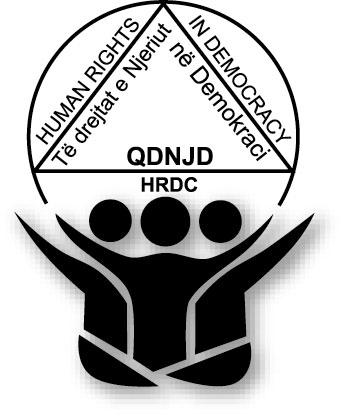




 Members name: Organization WOMEN Delchevo
Members name: Organization WOMEN Delchevo
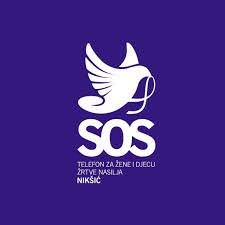
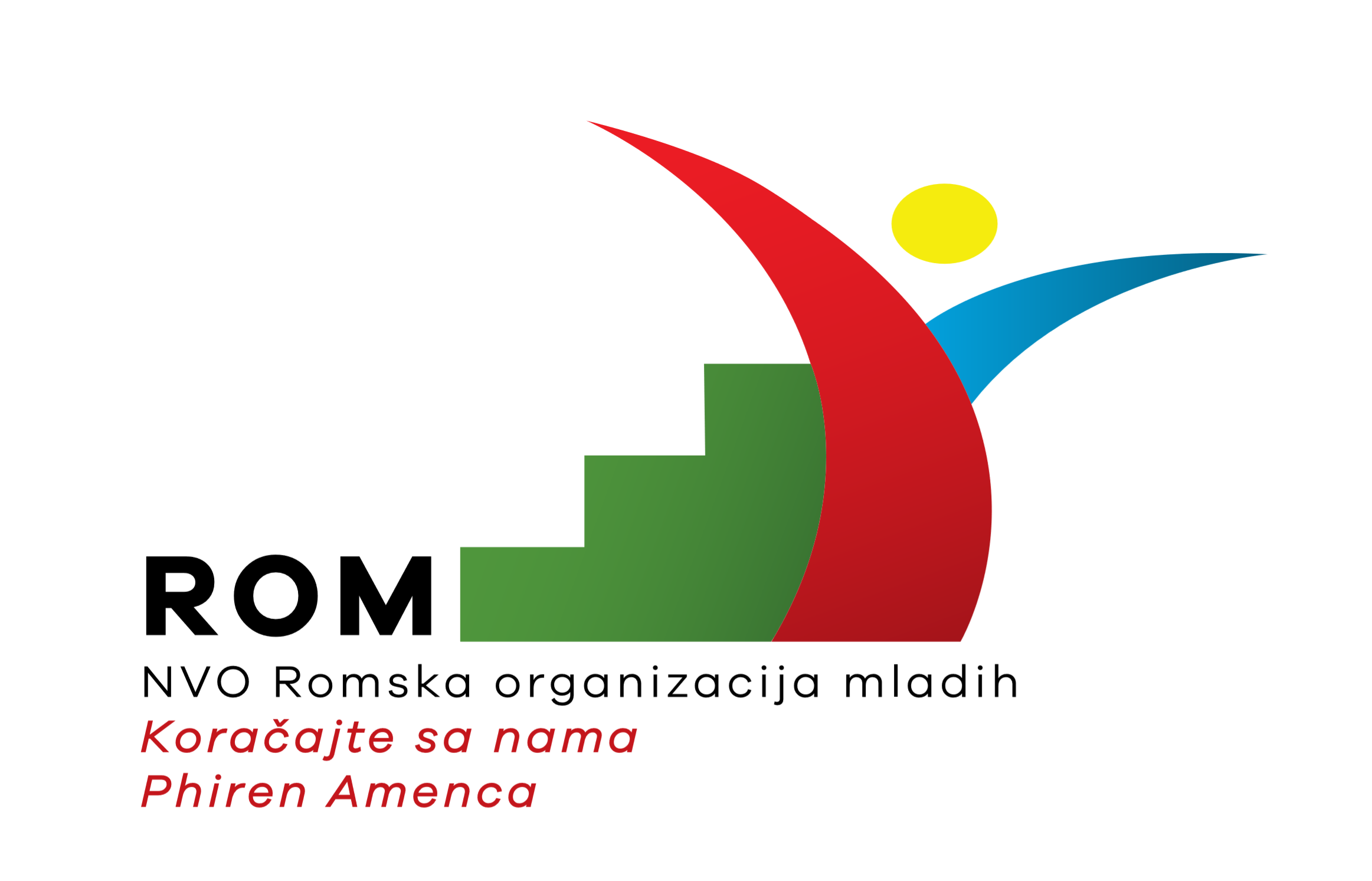



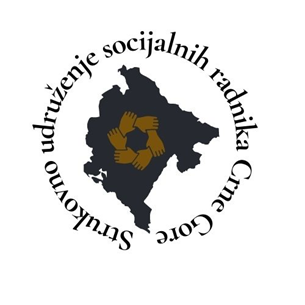



 Members name: Association for Legal Education and Transparency L.E.T. STATION Prilep
Members name: Association for Legal Education and Transparency L.E.T. STATION Prilep Members name: Center for Social Advocacy
Members name: Center for Social Advocacy Members name: NGO KHAM Delcevo
Members name: NGO KHAM Delcevo Members name: Juventas
Members name: Juventas Members name: PAD Foundation for environmental justice
Members name: PAD Foundation for environmental justice Members name: Foundation Open Society – Macedonia
Members name: Foundation Open Society – Macedonia Members name: HOPS – Healthy Options Project Skopje
Members name: HOPS – Healthy Options Project Skopje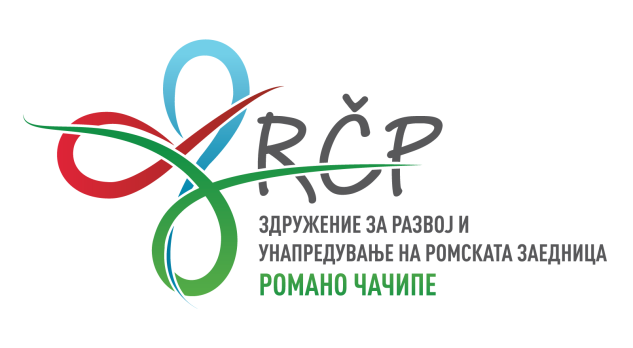 Members name: Romano Cacipe – Аssociation for development and promotion of the Roma community
Members name: Romano Cacipe – Аssociation for development and promotion of the Roma community Members name: Thirst for Life
Members name: Thirst for Life Members name: Media Education Center
Members name: Media Education Center Members name: National Roma Centrum (NRC)
Members name: National Roma Centrum (NRC) Members name: Association for Emancipation, Solidarity and Equality of Women (ESE)
Members name: Association for Emancipation, Solidarity and Equality of Women (ESE)